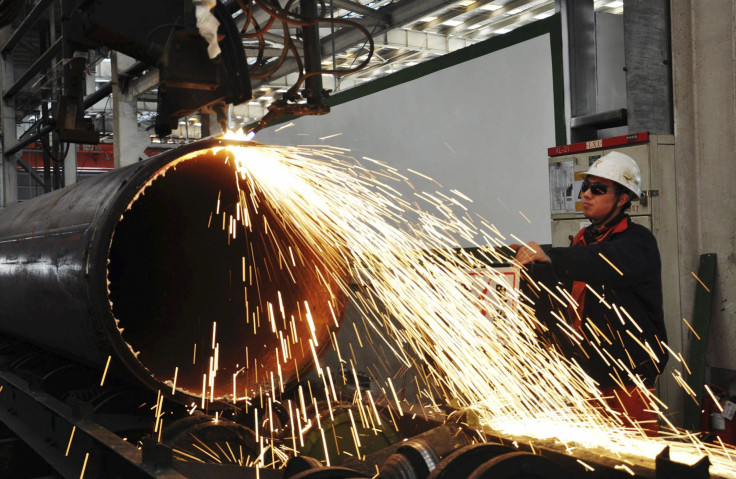China Factory Activity Contracts In December As Slowdown Deepens

(Reuters) - Activity in China's factory sector shrank for the first time in seven months in December, a private survey showed on Wednesday, highlighting the urgency behind a series of surprise easing moves by Beijing in the past two months.
The weak performance will add to the debate over whether Beijing needs to roll out more support measures to avert a sharper economic slowdown or fast-track market reforms to stimulate demand - or both.
The report puts a final sluggish stamp on what has been a surprisingly grim fourth quarter for the world's second-largest economy, which is expected to grow at its slowest pace this year in nearly a quarter of a century.
"Domestic demand led the slowdown as new orders contracted for the first time since April 2014. Price contraction deepened," said Qu Hongbin, chief economist for China at HSBC.
"We believe that weaker economic activity and stronger disinflationary pressures warrant further monetary easing."
The final HSBC/Markit Purchasing Managers' Index (PMI) for December came in at 49.6, just below the 50.0 level that separates growth from contraction. The number was slightly higher than a preliminary "flash" reading of 49.5 but down from the final 50.0 in November.
Total new orders contracted for the first time since April, albeit slightly, although new export orders increased.
Highlighting soft demand, output prices declined for the fifth consecutive month, with many companies surveyed saying they were cutting prices due to increased competition.
This in turn prompted firms to reduce output for the second consecutive month, although the rate of contraction was tiny.
Employment weakened for the 14th straight month, although the pace of job shedding slowed.
Hurt by a sagging property market, unsteady exports and cooling domestic demand and investment, China's economic growth is expected to slow to a 24-year low of 7.4 percent this year, although surprisingly weak fourth-quarter data has some analysts wondering whether that might be too optimistic.
Many market watchers expect Beijing to lower its annual growth target to 7 percent next year, from 7.5 percent in 2014.
Faltering factory output, rising deflationary pressures, sliding industrial profits and increasing non-performing loans highlight the policy challenges facing Beijing in 2015. Authorities need to not only encourage more lending by banks, but also find a way to stimulate genuine demand.
The central bank unexpectedly cut interest rates in late November for the first time in more than two years in bid to keep down borrowing costs and support growth. It has also loosened some lending restrictions.
© Copyright IBTimes 2025. All rights reserved.





















